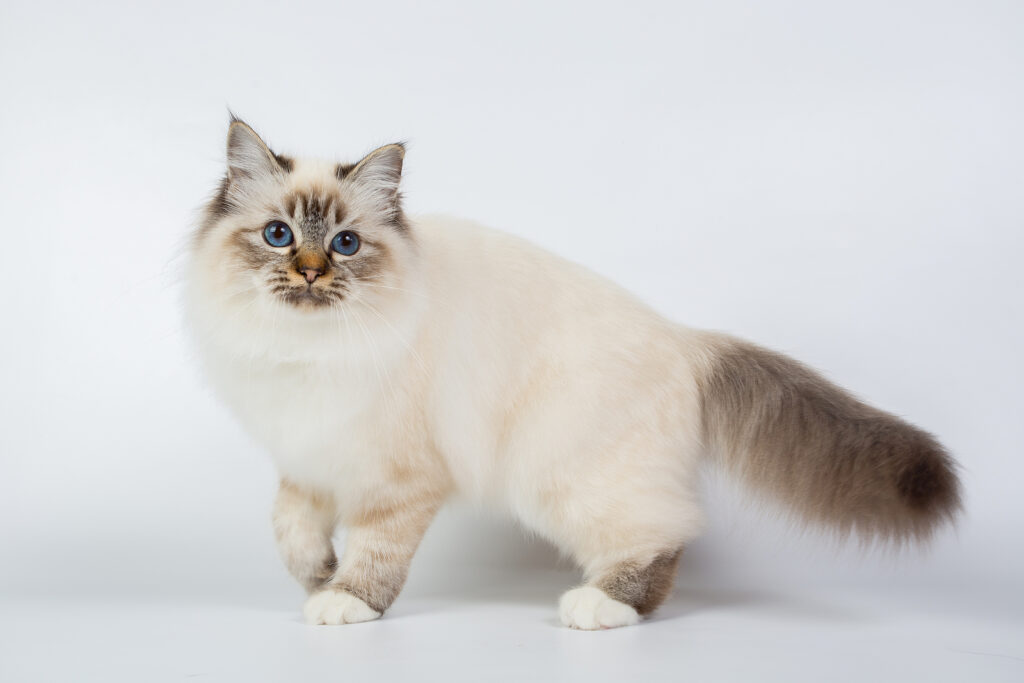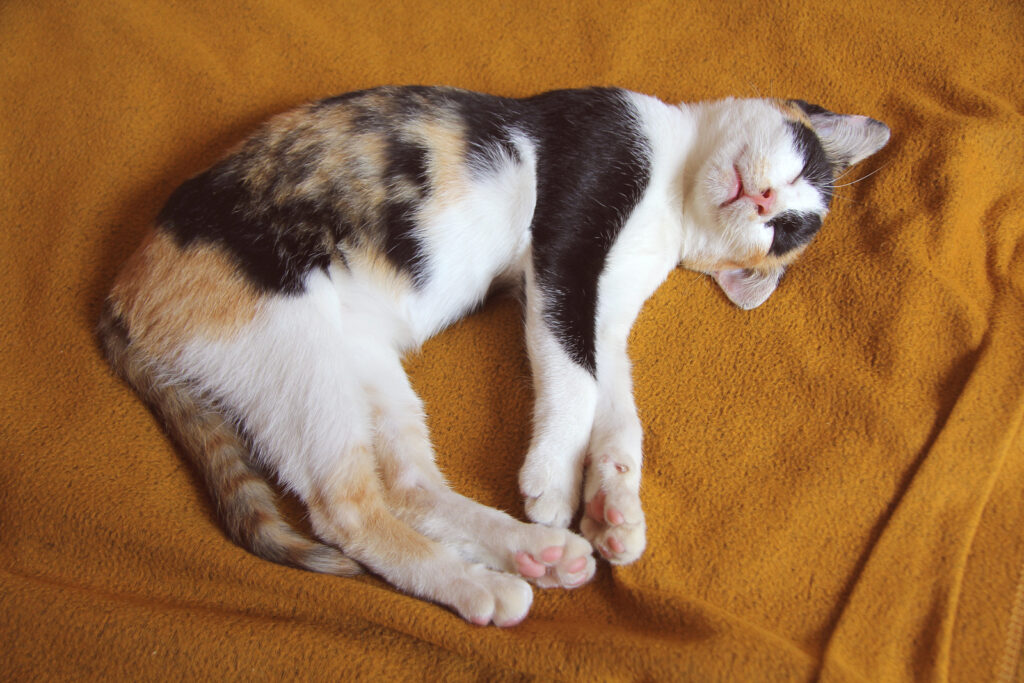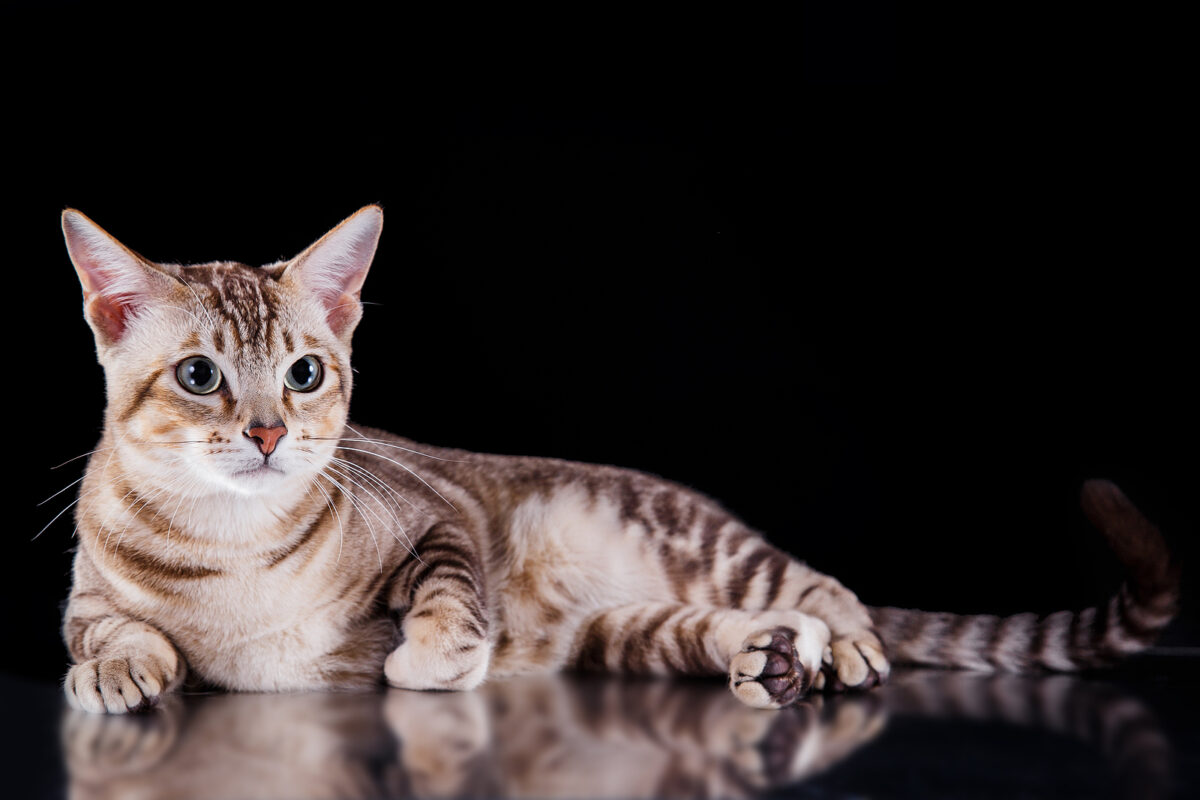Cats know how to preen and flaunt their fabulous fur. To add to feline glamour and mystery, their coats come in a variety of colors and patterns with names that sound more like shades on an artist’s palette, such as lavender cream, cinnamon, and blue smoke.
But a cat’s color is more than a pretty description and it doesn’t just apply to pedigreed cats. Knowing a cat’s true color and pattern is valuable for a couple of reasons. It can help shelter employees “sell” a cat to potential adopters. Being able to give a name to a particular color or pattern raises the status of a cat. Being knowledgeable about a cat’s color or pattern can also help cat lovers accurately describe lost pets. Saying that a cat is a shorthaired gray mackerel tabby with a white belly is a more meaningful description than “She’s sort of gray with stripes.”
There’s a lot more to know about cat colors and patterns than we can cover here, but the following guide to the official feline color chart can get you started.
Interestingly, the feline coat color chart is based on only two colors: black and red. When colors are modified and lightened, they are referred to as dilute. The various shades of these original colors have their own special names, too.
Further, apart from fur colors, the markings on a cat’s ears, face, feet, and tail also have descriptive names.
So, let’s getting “painting”:
Red is the official color name used by members of the cat fancy (people who breed and show cats) to describe what cat lovers commonly refer to as orange, marmalade, or ginger.
Cream is a dilute red gene and is also referred to as buff. Yellow and beige are other color descriptions of a cream coat.
Mutations of the black gene produce chocolate, described as a rich dark brown.
Cinnamon is an off-shoot of black and resembles the color of the spice after which it’s named.
Fawn is a dilute form of cinnamon and is similar to a light latte coffee color.
Champagne describes a honey beige shade. One breed in which it’s seen is the Tonkinese.
Havana is a brown shade similar to the brown of a tobacco leaf.
Sable is very dark brown.
Seal refers to dark brown colorations usually found on the ears and tail.
Bronze describes a range of browns. It’s seen in cats such as Egyptian Maus.
Blue is a diluted grey shade from the black gene. It’s also sometimes called maltese.
Lilac, lavender, and frost are all shades of light or dove gray. These colors are specific to certain breeds such as Burmese, Siamese, American Bobtail, American Curl, Balinese, Bengal, Japanese Bobtail, Oriental, Persian, Himalayan and the Ragdoll.
Solid Colors
Cat coats that are all one color are called “solid.” Black, white, blue, chocolate, cinnamon, lilac or lavender, red, cream, sable or brown and cream are all solid colors.
How are we doing here? It’s about to get more complicated.
Some cats also have natural highlights that resemble the balayage highlights that humans pay big bucks for at hair salons: a lighter color applied to the hair, creating a soft and natural gradation of lightness toward the ends. In cats, this is known as tipped. The tip of each hair is a different color from the hair shaft.
The amount of tipping on the end of the hair varies. Lightly tipped hair, where only the very end is dark and the rest of the hair shaft is white, is called chinchilla.
When about a third of the hair shaft is dark, the resulting look is called shaded.
When nearly two-thirds of the hair is dark, the coat is called smoked. For example, black smoke is the coat description of a solid black cat with white roots. And blue smoke is a solid blue (gray) cat with white roots.
Patterns, Stripes, Patches
This is where cats put down the art palette and get involved with the fashion industry and designs. Let’s start with stripes. Tabby cats are plentiful whether they are gray, silver, or orange. But tabby isn’t a breed; it is a coat pattern.
A striped cat, aka tabby cat, may have one of four different patterns: classic, mackerel, spotted, or ticked.
Classic tabby: The classic tabby coat, sometimes called blotched, has wide, dark stripes curving over the flanks and shoulders and three large stripes running from the shoulder blades to the base of the tail.
Mackerel: In this pattern, the most common, stripes are narrow and run parallel to one another like the bones of a fish — just like a mackerel.
Spotted: This tabby has distinct round spots against a background of lighter fur.
Ticked or agouti: Cats with this tabby pattern, such as Abyssinians, have almost no stripe on the body coat, but their legs, tail, and face sport very thin stripes.
Some breeds have modified tabby patterns. For example, the marbled pattern of Bengal cats is due to the interaction of wild and domestic genes. Similarly, the interaction between wild and domestic genes in the Sokoke has given this breed’s modified classic blotched tabby coat a distinctive marbled look.
The origin of the word tabby has an uncertain history. Some claim the name is associated with a type of striped patterned silk called Atabi made in Attabiah in the Middle East. Others claim that it comes from the Spanish tabi, a kind of cloth with irregular tie-dye-like markings.
On Point
A cat with a “pointed pattern” is a cat whose color and/or pattern appears only on extremities: face, ears, paws, and tail. We may also describe a cat such as this as a “color point.”

Doubling Up on Color
The Cat Fanciers Association labels a cat with more than one coat color as a parti-colored cat. Included in this group is the tortoiseshell, the blue cream, the lavender cream, and the calico. Many of the colors and patterns in the parti-color classification are related to the sex-linked orange gene. (All orange cats are usually males.)
A tortoiseshell is a black or chocolate female cat with patches of red throughout her coat.
A blue-cream is a blue female cat with patches of cream.
A lavender-cream is a lavender female with cream patching. Both the tortoiseshell and the blue or lavender-cream can be augmented with white.
The calico is a female cat with white, plus large solid areas of black and red, blue and cream, or lilac and cream.

Two Colors or Bi-Colors
A “bi-color” is a parti-colored cat with solid areas of white and another color and/or pattern (such as the color red or a tabby pattern). Bi-colored cats are usually blue and white, red and white, cream and white, and black and white. Bi-colored cats may also have a tabby pattern and white present, such as red tabby and white or brown tabby and white. Colors that occur in the bi-color cat can occur in both males and females.
If bi-colored cats have more white on their body than another color, they are described as a “bi-color van.” The “van” pattern is common and can occur in bi-color cats whose color is solid or tabby patterned. Typically, in a “van” patterned bi-color, the coat is white with color on the ears and the tail. Turkish Vans carry their pattern in their name.
Now, go love your cat of any color!
This article was reviewed/edited by board-certified veterinary behaviorist Dr. Kenneth Martin and/or veterinary technician specialist in behavior Debbie Martin, LVT.








